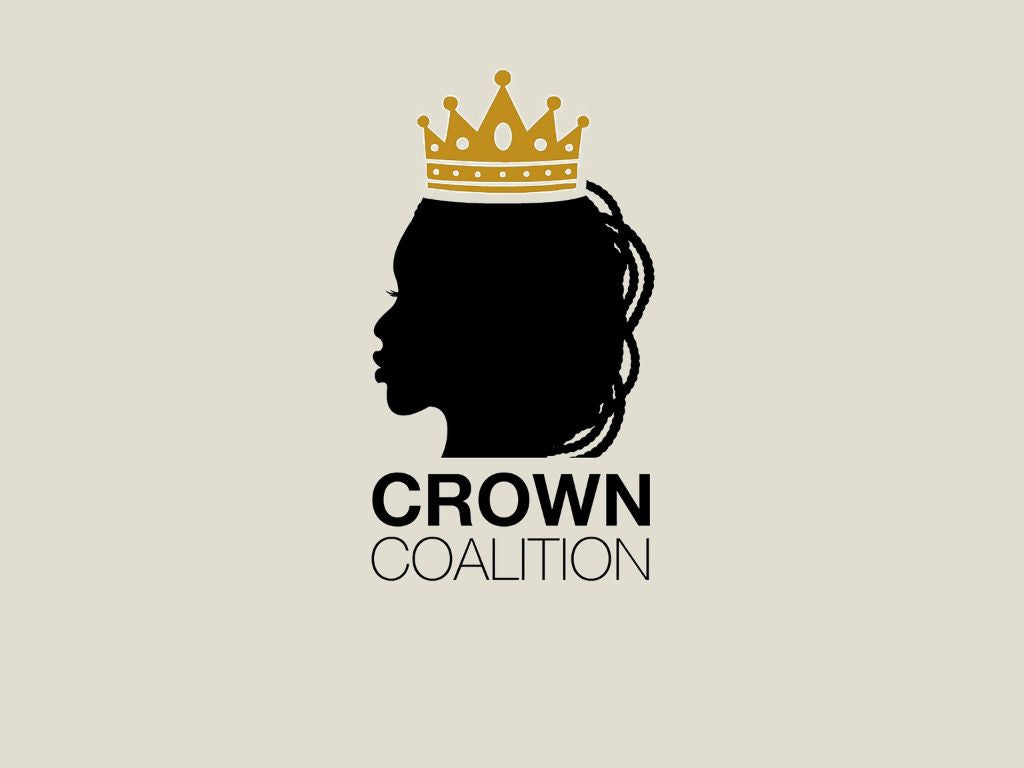All About The Crown Act
We recently came across this Instagram Reel (resurfaced from 2016) by celebrity hairstylist, Vernon François, asking people on the street which woman looked more professional. He shared an image featuring two Black women, one with straightened hair, the other with natural, coily hair. We love Vernon and his tireless work to dismantle race-based hair biases. Discrimination around natural hair and protective hairstyles has been happening forever, and it’s ridiculous. Hair cannot be “professional” or “unprofessional.” Is your hair answering your emails? Is your hair typing up the TPS report? Is your hair attempting not to roll its eyes in that meeting that could have been an email?
In partnership with Dove, The Crown Act has emerged as a beacon of change, aiming to protect individuals from race-based hair discrimination. Sounds absolutely like something we can stand behind, so today we’re digging into The Crown Act, its objectives, its successes (so far) and you can get involved.
What is The Crown Act?
The Crown Act stands for "Creating a Respectful and Open World for Natural Hair." It is a legislative initiative designed to prohibit discrimination based on natural hairstyles and textures, particularly those associated with race and ethnicity. The Act aims to ensure that individuals are free to wear their hair in a manner that reflects their cultural heritage, identity, or personal preference without facing adverse treatment in employment, education, or public accommodations.
Objectives of The Crown Act
The primary goal of The Crown Act is to eliminate race-based hair discrimination and promote diversity, inclusion, and cultural acceptance. By recognizing and protecting diverse forms of self-expression, the Act contributes to fostering environments where individuals feel empowered to embrace their natural hair without fear of prejudice or bias.
States That Have Enacted The Crown Act
Since its inception, The Crown Act has gained momentum across the United States, with several states enacting legislation to prohibit hair discrimination. As of today, 23 states have passed The Crown Act, and numerous municipalities and local governments have also implemented similar protections against hair discrimination.

How to Get Involved as an Individual
As individuals committed to promoting diversity and combating discrimination, there are several ways to support The Crown Act and its objectives. Check out The Crown Act’s website for a link to a template to email your senator, and sign the petition. Additionally:
Educate Yourself: Take the time to learn about the significance of natural hair in different cultures and communities. Understanding the cultural and historical context behind various hairstyles can deepen your appreciation for diversity.
Support Organizations: Support organizations and advocacy groups that are dedicated to advancing the rights of individuals affected by hair discrimination. Consider donating, volunteering, or participating in their initiatives and events.
Lead by Example: Embrace diversity in your personal and professional life by celebrating natural hairstyles and creating inclusive environments where everyone feels valued and accepted.
Stay Informed: Stay informed about developments related to The Crown Act and other initiatives aimed at promoting equality and inclusivity. Share information with your networks and encourage others to join the movement.
With so much other nonsense to navigate, The Crown Act represents a crucial step forward in making sure what your hair looks like isn’t getting in the way of everything else you’re trying to do. And, until my hair is analyzing data in Excel on its own, please stop referring to it as “professional” 🙄.

